
By Cheryl Anderson
“I am so lucky to have painting, which even late in life still furnishes illusions and sometimes joy.”
—Pierre-Auguste Renoir
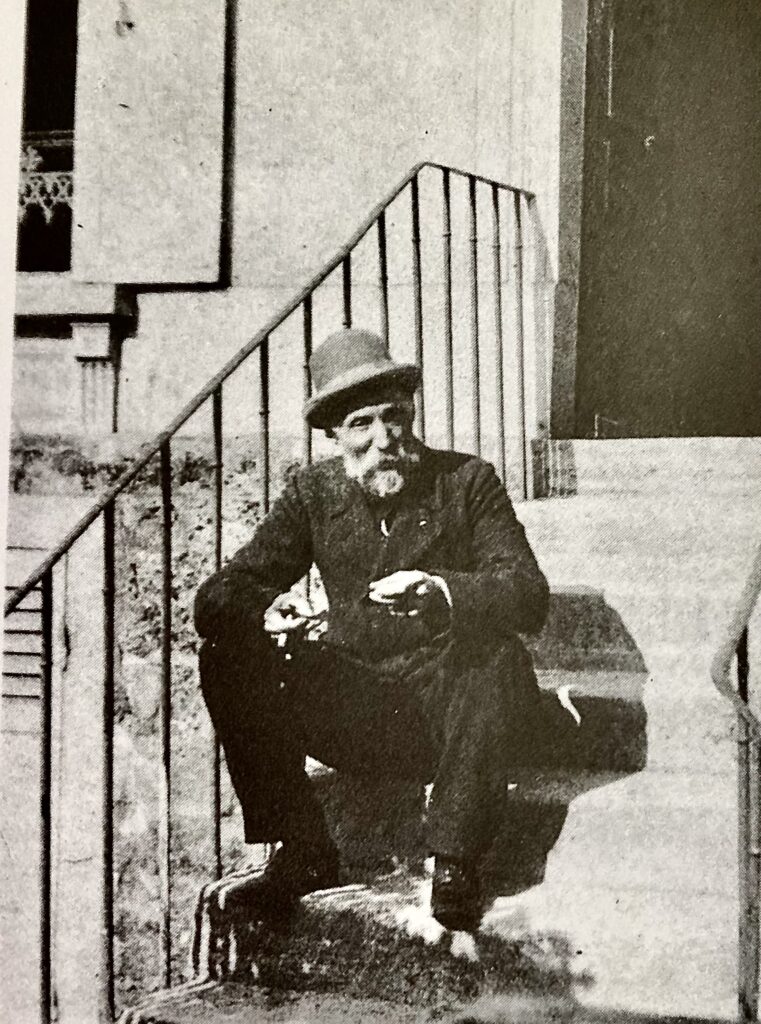
Renoir sitting on the steps of his flat on rue Giradon, Paris, about 1890.
The words of Renoir remind me of Winston Churchill and his thoughts how painting saved his life during losses and turmoil. For both Renoir and Churchill, painting got them through their difficult times. Les Collettes, in Cagnes-sur-Mer, is where Pierre-Auguste Renoir would spend his final years. His body was crippled, he was confined to a wheelchair, and for years suffered a great deal of pain, but his spirit to do what he loved never let him down. For a few hours instead of pain his mind could be carried away into the canvas where a pretty picture would emerge. It’s these years of Renoir’s life and his indomitable spirit that most move me.
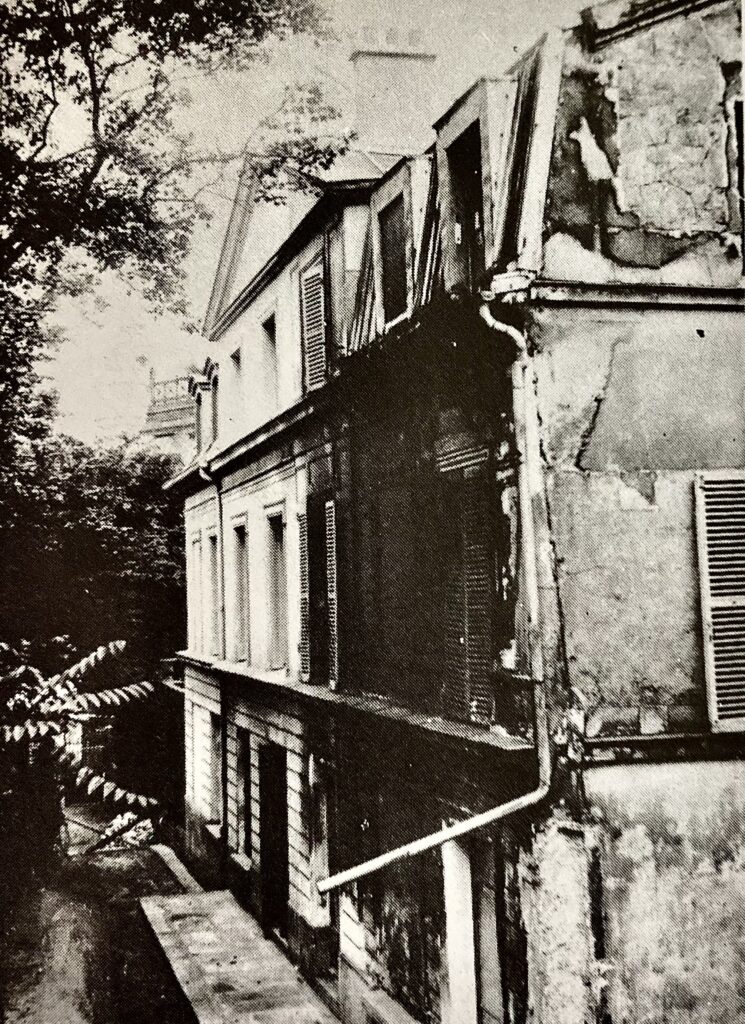
Renoir’s flat at the Château de Brouillards, 13 rue Girardon, Paris, about 1890.
Auguste was in bed with a pulmonary infection. His son Jean related the story that a few hours before his father’s passing he had asked his nurse for his paintbrushes and palette to paint some flowers. “As he handed them back to his nurse, he murmured, ‘I think I’m beginning to understand something about this’.” Pierre-Auguste Renoir died December 3, 1919.

One of the last photos taken of Renoir before he ws only able to paint whilst sitting.
It’s often written that the paint brushes were “tied” to Renoir’s hands. This is not true. Anne Distel in her book, Renoir, A Sensuous Vision, very clearly sets the record straight: “brushes were slid into shriveled hands that had been bandaged to avoid irritation…a false impression that still cannot be dispelled.”
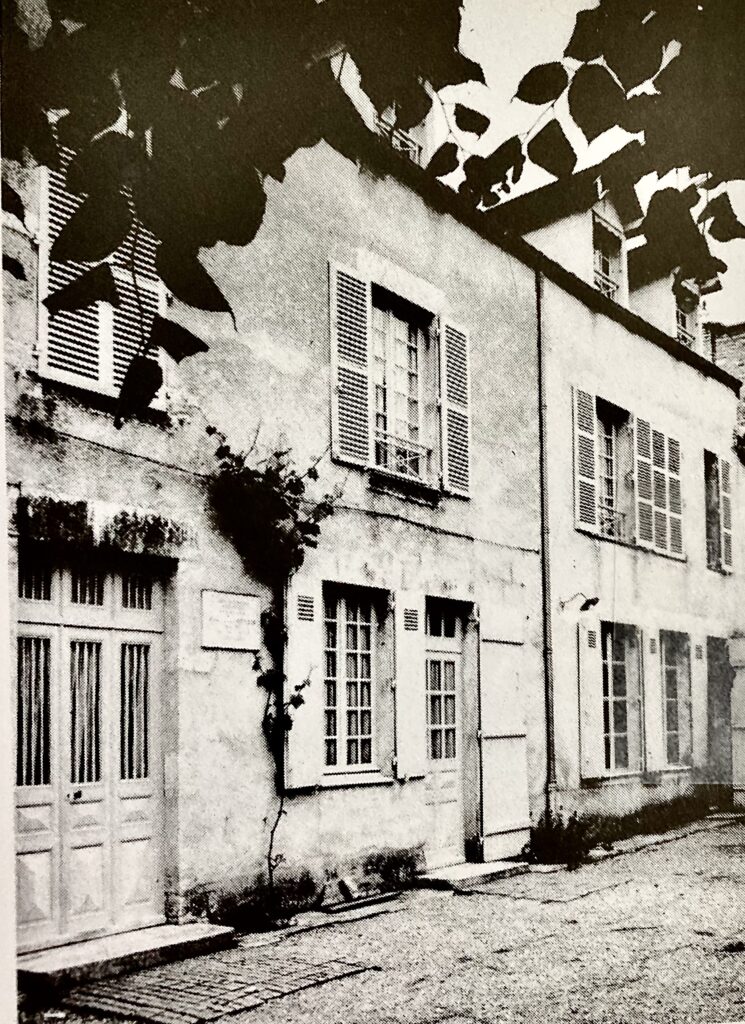
Renoir’s house in Essoyes.
Les Collettes was always a house I wanted to visit. The first time was in 1994 only to find the house was closed. We were too late. I can’t stress enough that if you want to visit, the hours it’s open are strictly observed. In 1994, one could go up to the house and wander around the grounds any time. However, I did take a picture in 1994 of the small window by the door and painted a picture. Unsure when the next time would be, I made my own postcard from Les Collettes. I returned in 2007 when the studio in the house was set up as though he had just left the room. The interior of the villa is understated and charming. Much like Malmaison in that it would be quite livable.
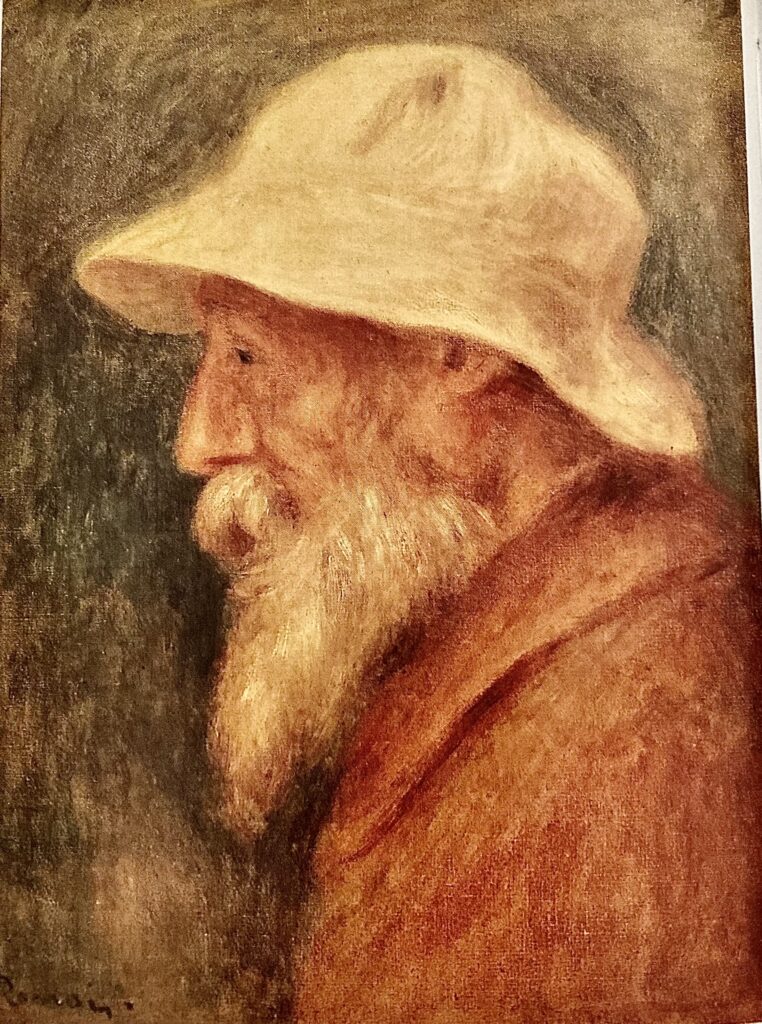
Self portrait “There is not a trace of complacency in this image of an old man that Renoir painted of himself in 1910.” Renoir, A Sensuous Vision, Anne Distel.
The location is everything with its sweeping views of Cagnes-sur-Mer in the distance and beautiful grounds with ancient olive trees. Below the low wall in front of the villa facing Cagnes is an orchard of orange trees. Renoir’s wife, Aline, had orange trees and mandarin orange trees, and a kitchen garden planted. One can only imagine how delicious the air when the orange blossoms are in bloom.

Renoir 1901/02
Renoir bought a house in Essoyes in 1898. It was his wife’s hometown. They spent summers there, but severe rheumatoid arthritis also began that same year and these attacks would prompt him to go to the south of France during the winter months. La famille Renoir, moved to Cagnes in 1905. The warm climate for his health was the main reason to make the move. In June 1907, he bought the estate Les Collettes. There was only a farm house so he had a villa built. While the villa was being built, he and his family lived in the Ville de la Poste in Cagnes.
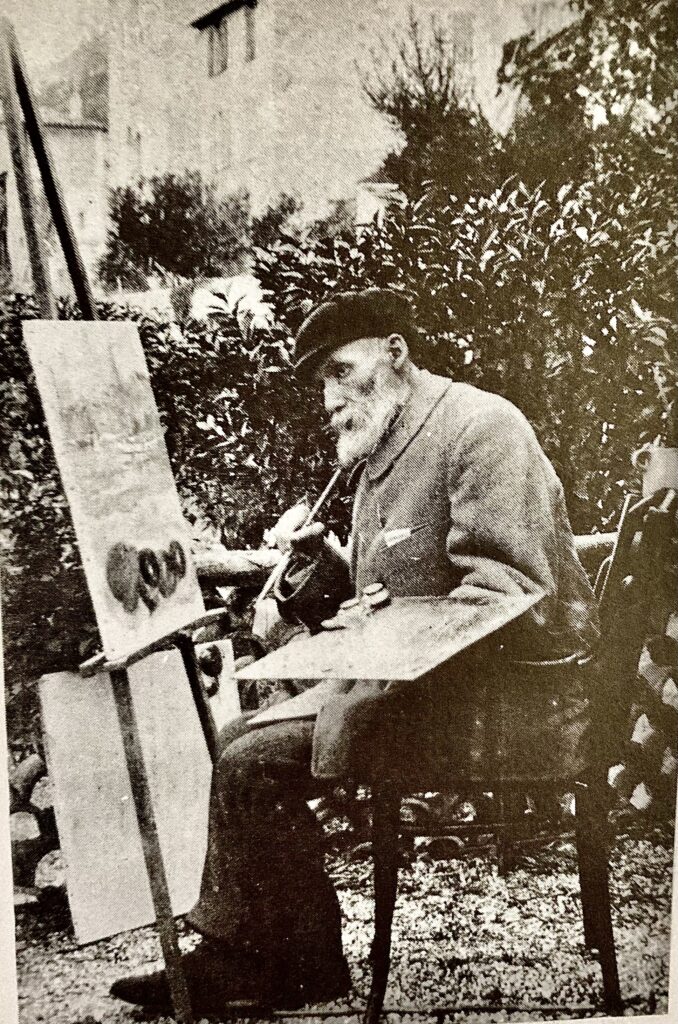
Painting at the Ville de la Poste in Cagnes-sur-Mer where la famille Renoir lived as the villa Les Collettes was being built.
 One of many canvases he painted of the farm house. One of many canvases he painted of the farm house. |

Gift shop in the old farm house. |
A large studio with many windows would also be built among a grove of olive trees on the grounds of Les Collettes. The openness of the studio gave him the feeling of painting outside as his health and confinement to a wheelchair had curtailed his ability to paint en plein air. By 1912, he was unable to walk after suffering from a stroke. What strength he had was preserved for painting. The household evolved completely around Renoir’s painting.
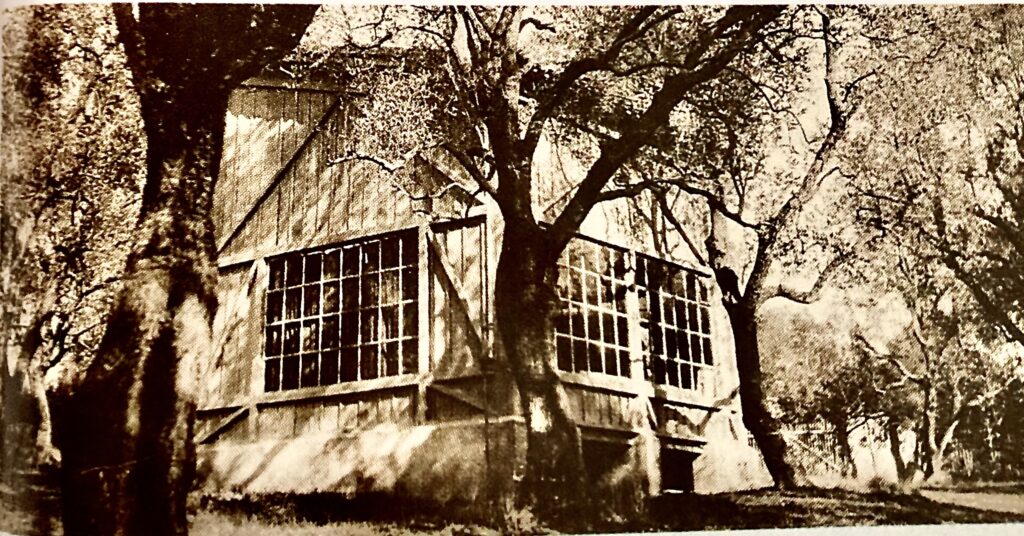
Renoir’s studio with many windows.
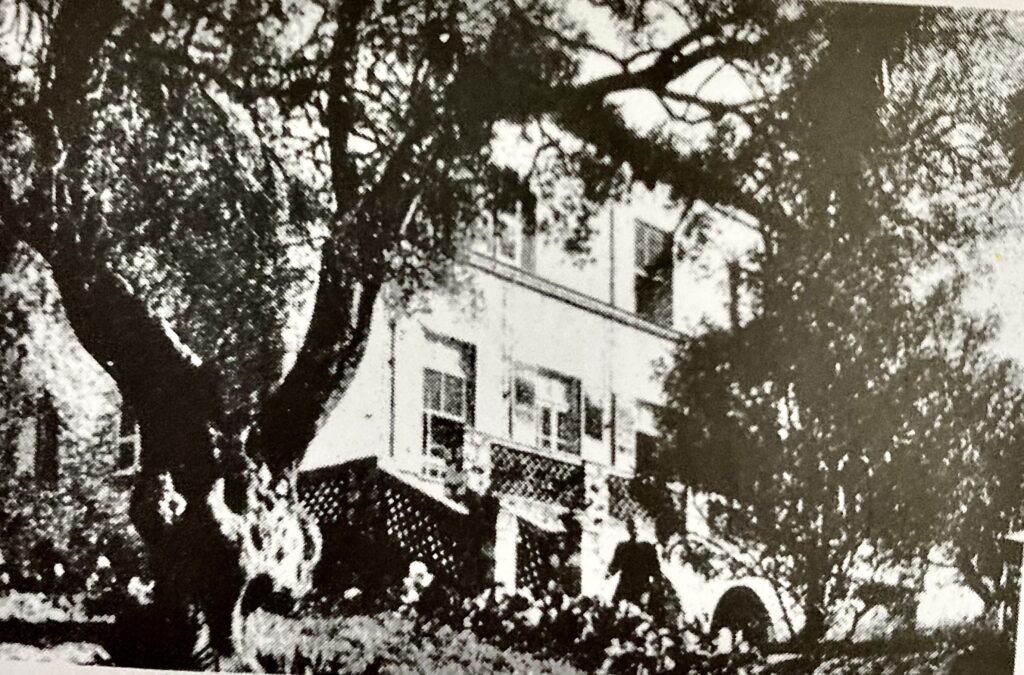
Les Collettes
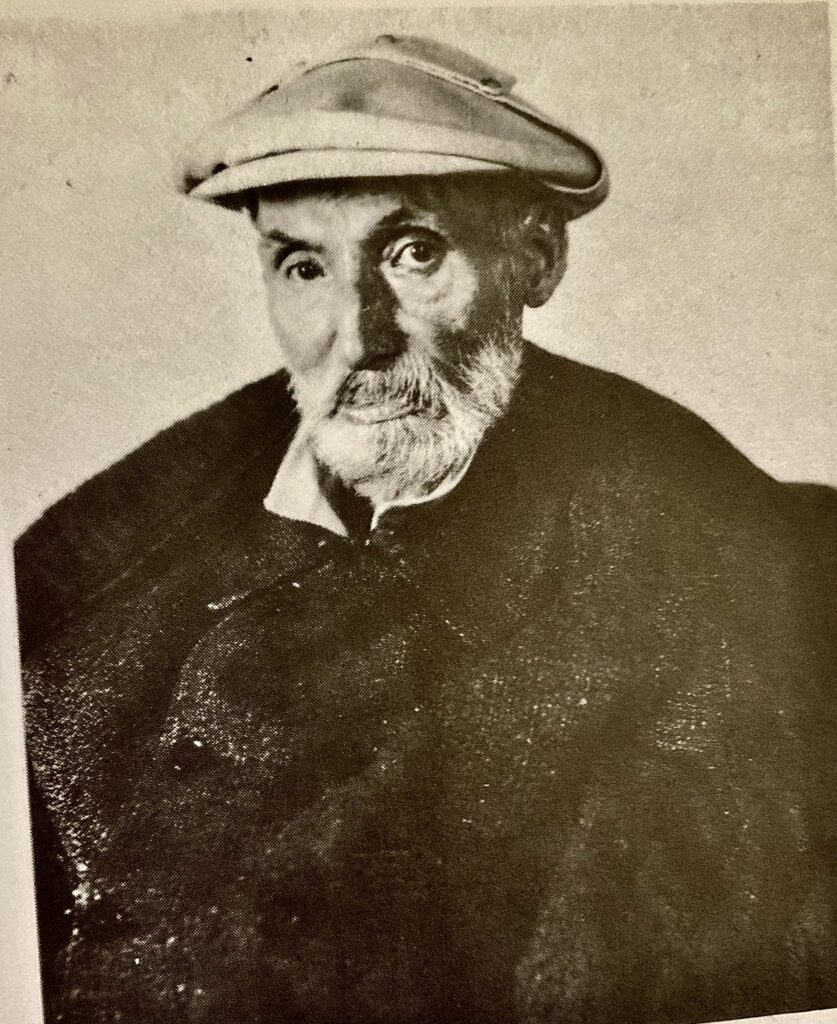 Renoir 1914 Renoir 1914 |
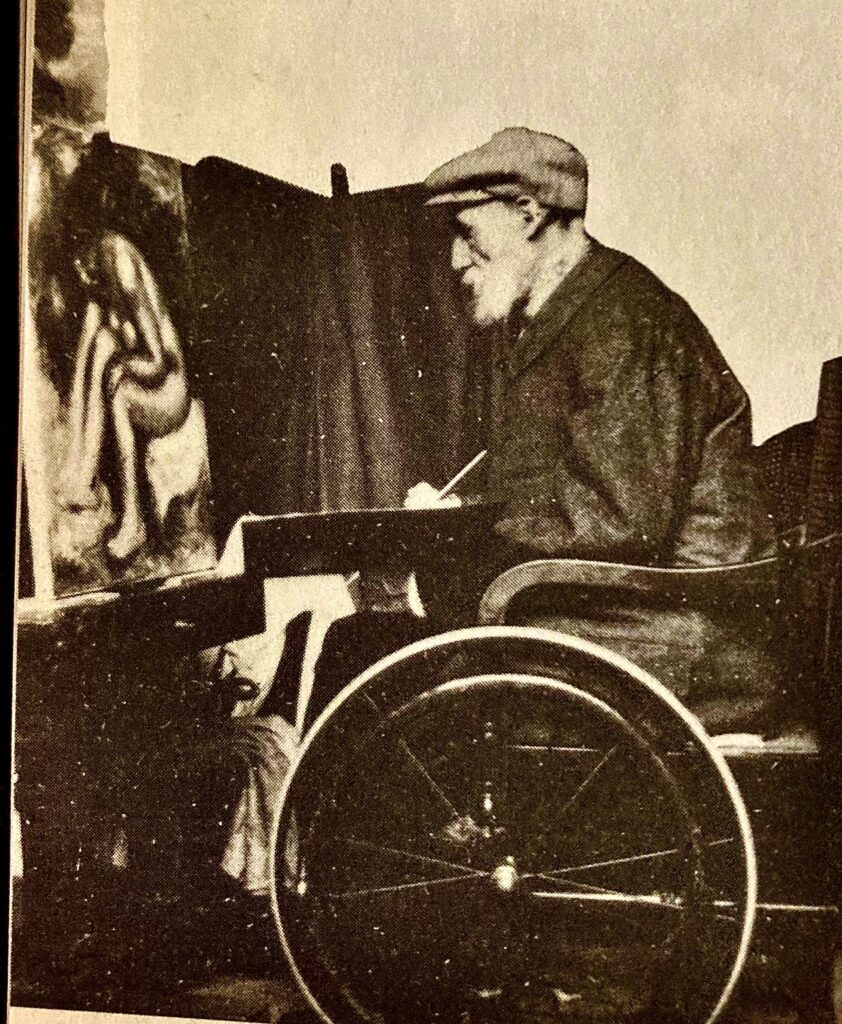 Renoir in his studio at Les Collettes. Renoir in his studio at Les Collettes. |
“Now that I can no longer count on my arms and legs, I would like to paint large canvases. I dream only of Veronese, of his Marriage at Cana. What misery.”, Renoir to Albert André, 1919.
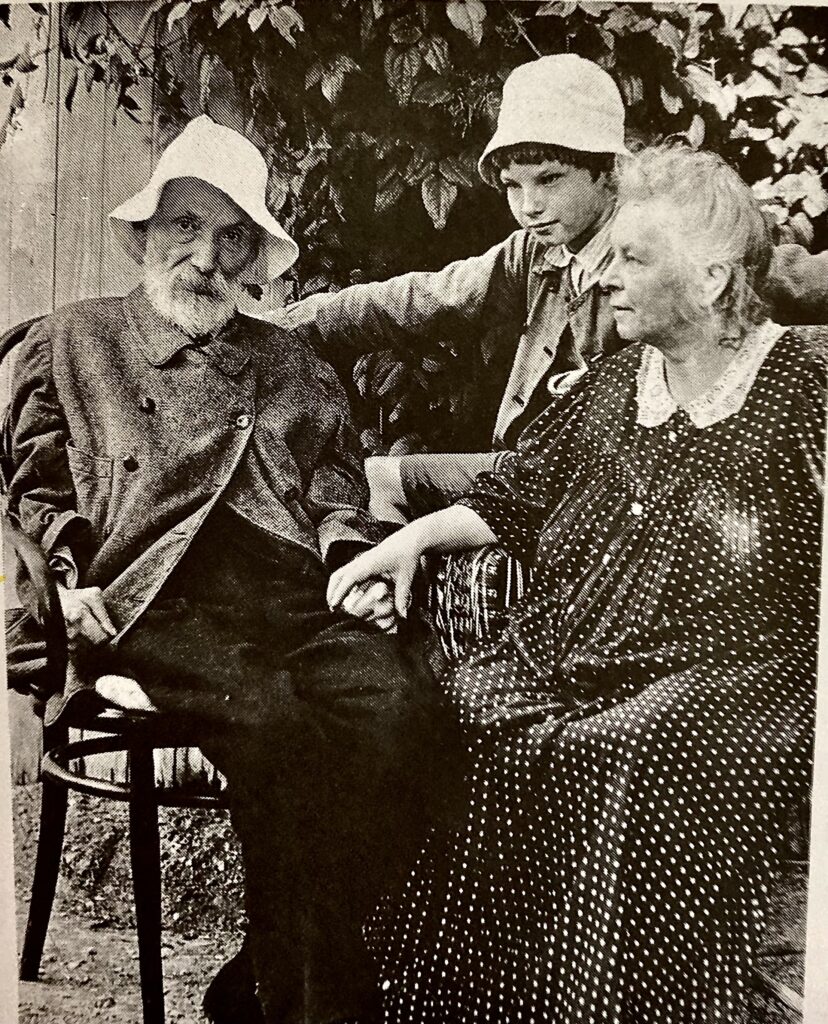
Renoir with his wife Aline and son Claude.
Most of his time was spent at Les Collettes, but he retained his flat on Boulevard Rochechouart in Paris. He was able to attend one of the earliest performances of the Ballet Russe in Paris in 1911. In the spring of 1919, Renoir was invited by Paul Léon, director of the Ecole des Beaux-Arts, to view his small, Portrait of Madame Georges Charpentier, that had recently come into the national collection. Although, it was not the first of his works to hang in the Louvre, but it would be his last excursion.
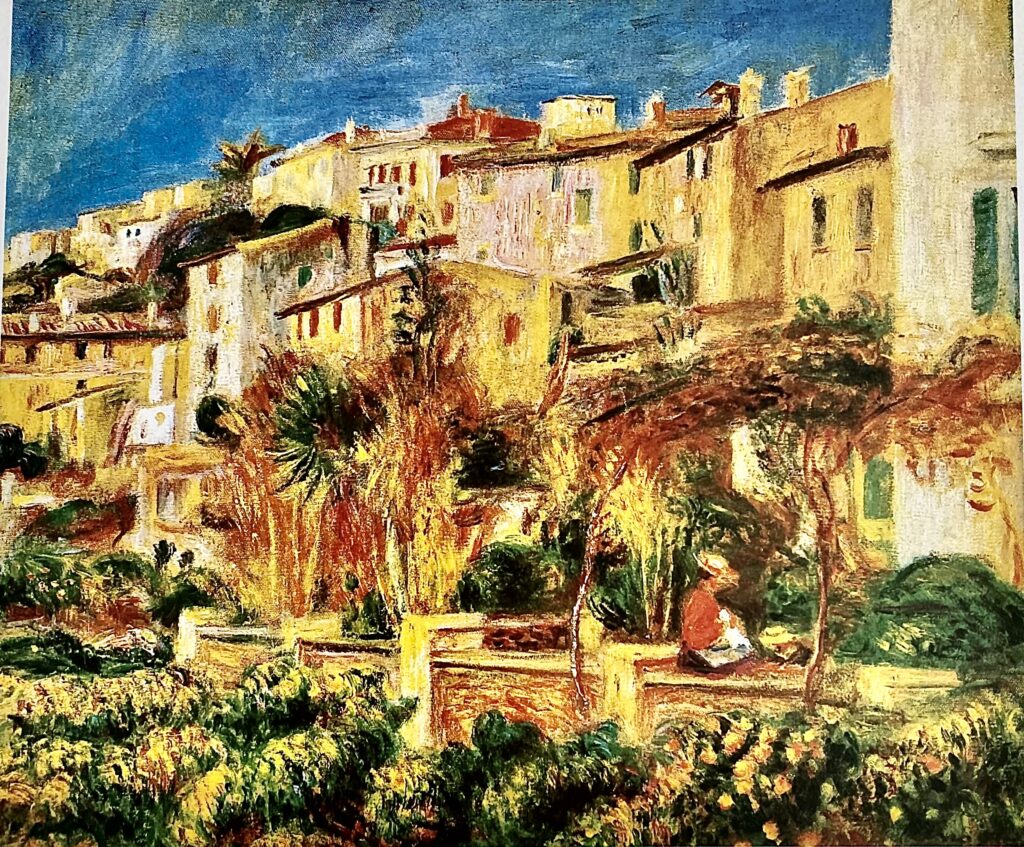
A Renoir painting of Cagnes-sur-Mer.
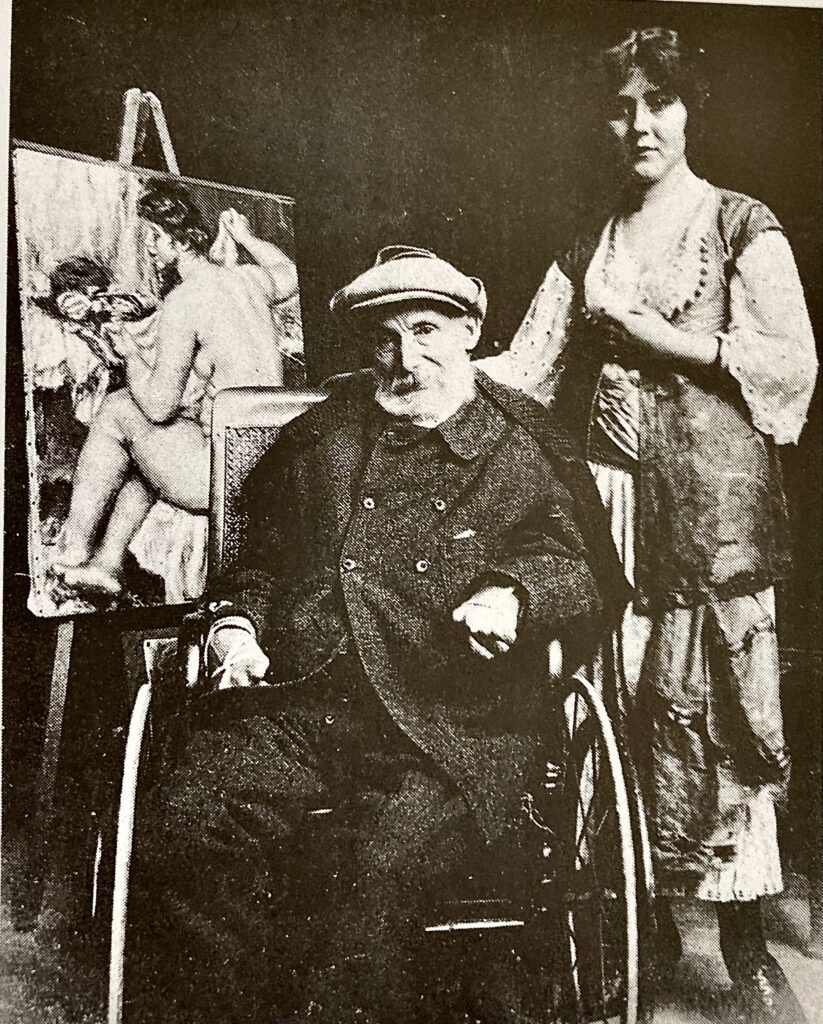
Renoir with Andrée Heuschling.
“When I view the old masters, it make me feel like quite a small man, yet I think that out of all my works, enough of them will assure me a place in the French school, that school that I so love, that is so gentle, so clear, such good company…with nothing flashy about it.”, Renoir.
Picasso called him “the Pope.”
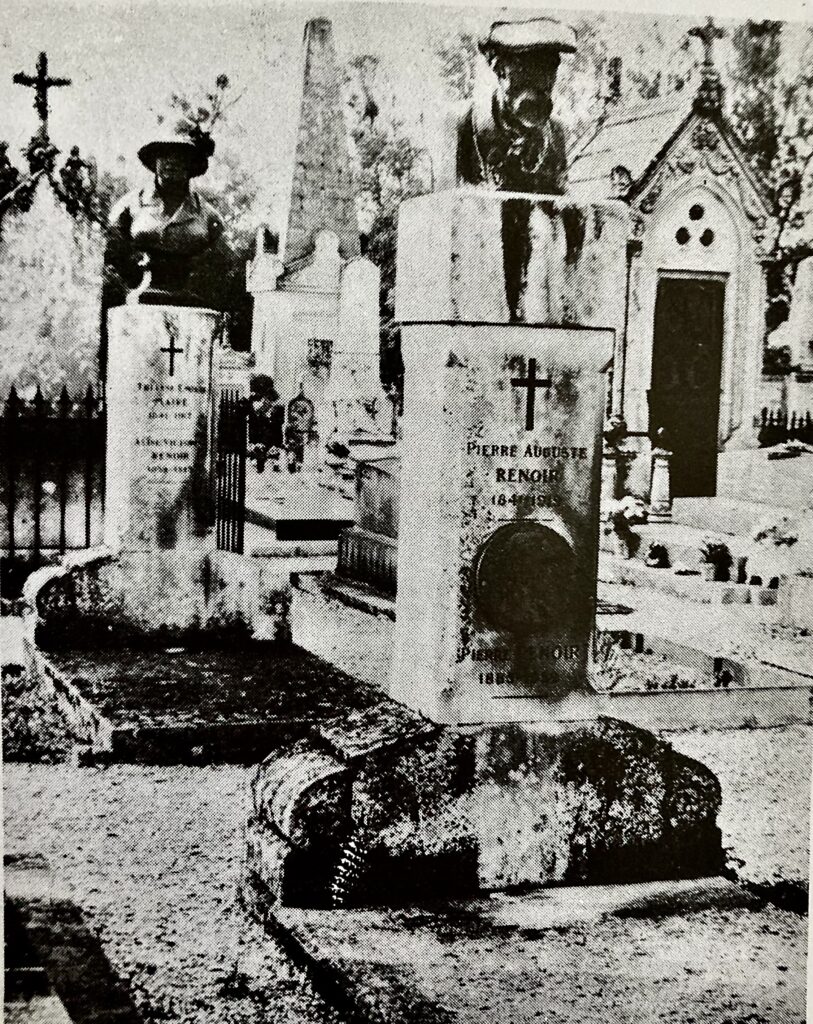
Graves of Renoir and his wife Aline in the Essoyes cemetery.

La Fenêtre Alas it was not open, so I painted a picture of the window by the front door.

We are familiar with Renoir’s major works. But, my favorites are his small vibrant paintings of oranges and cups, especially, Cup and Oranges. Oranges often appear in his small still life paintings…some painted very late in his life. There is something about oranges in the south of France that makes you want to paint them. So, I did.
 |
 |
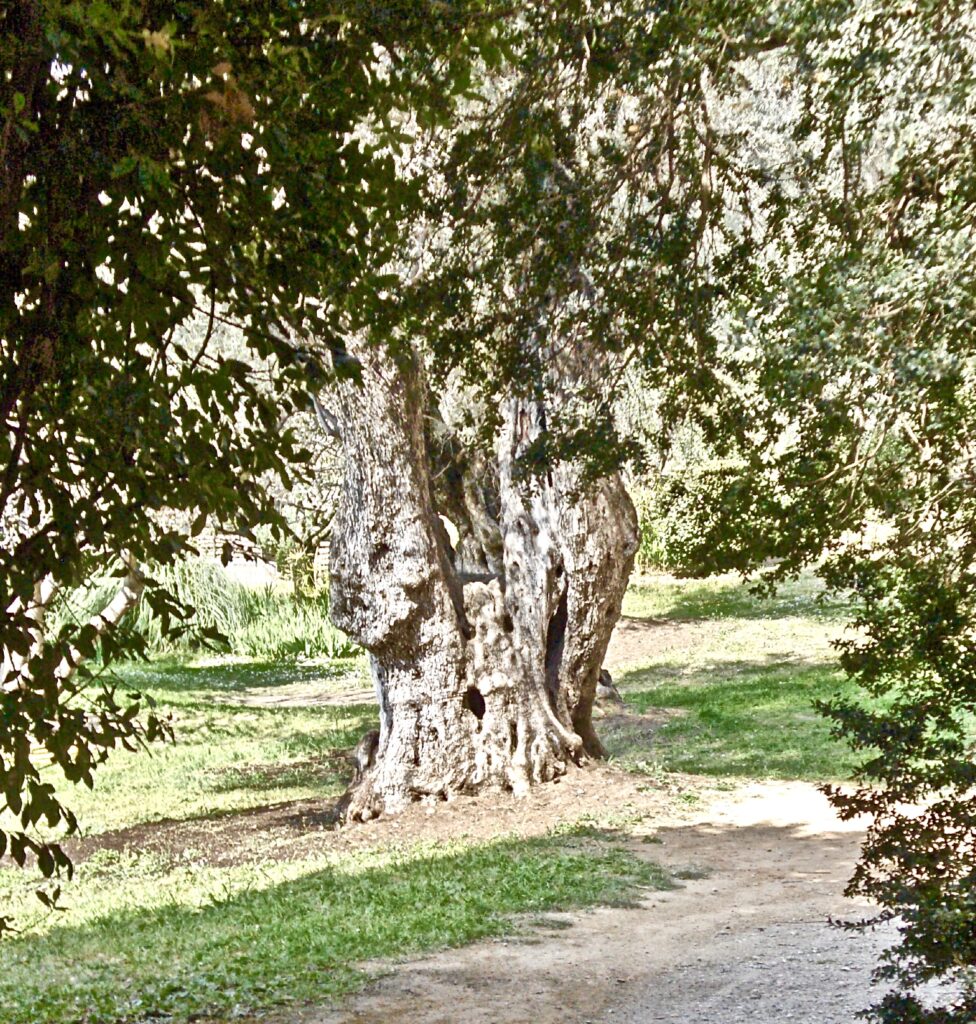 |
 |
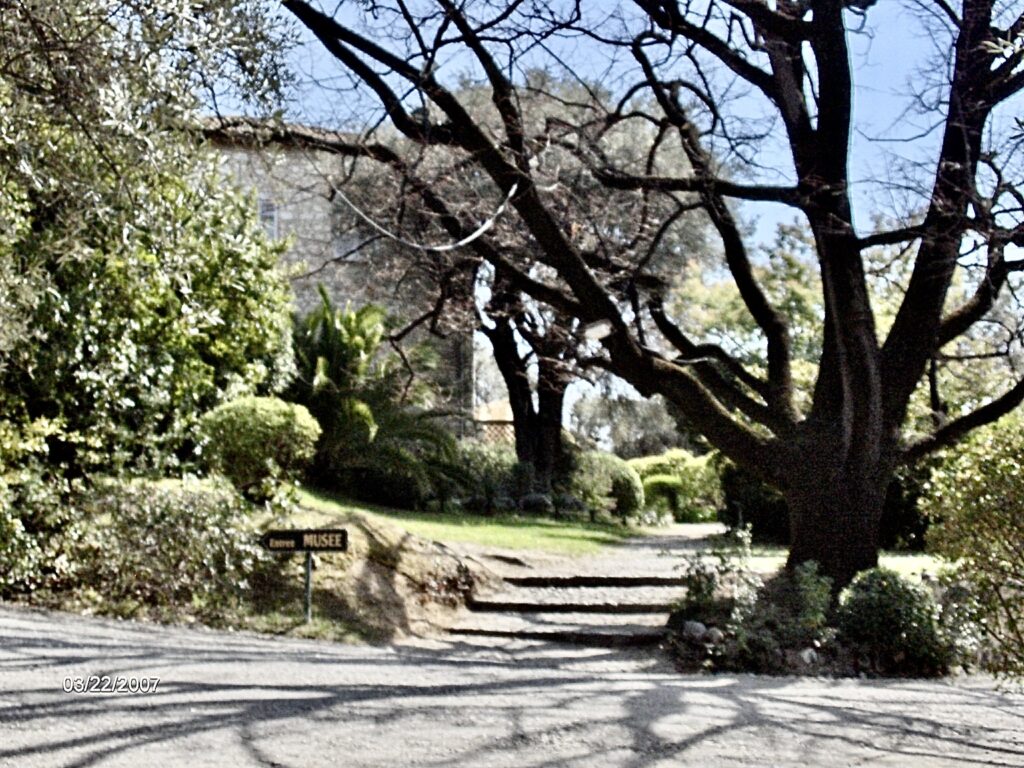
 |
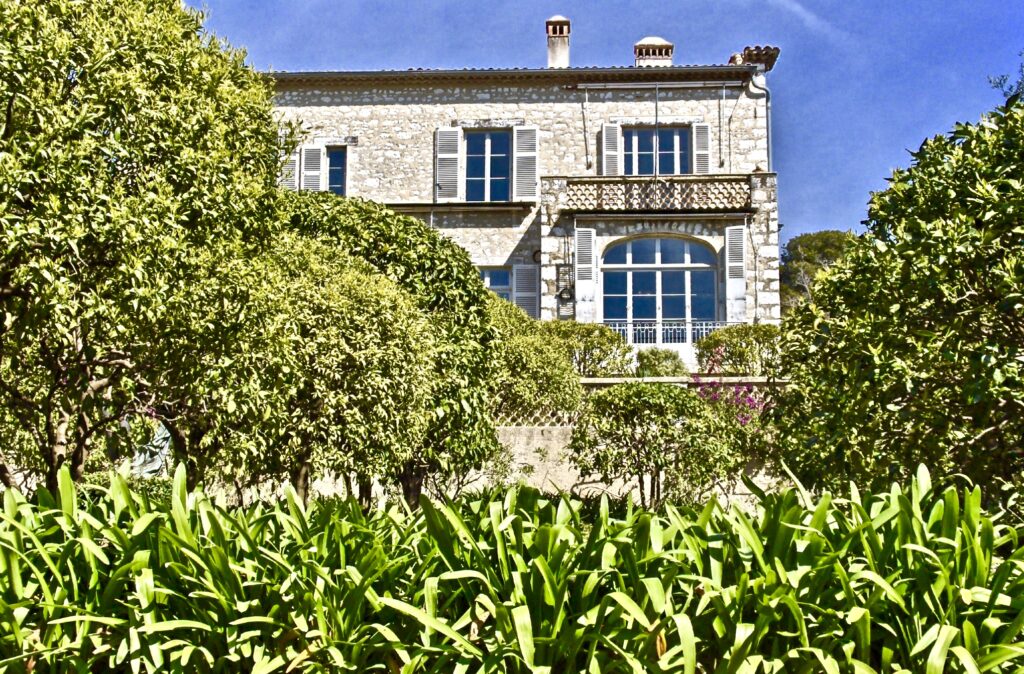 |
There are those that have said Renoir’s paintings are idealized. But, as you can see he remained resolute and unapologetic in regards to his style:

 |
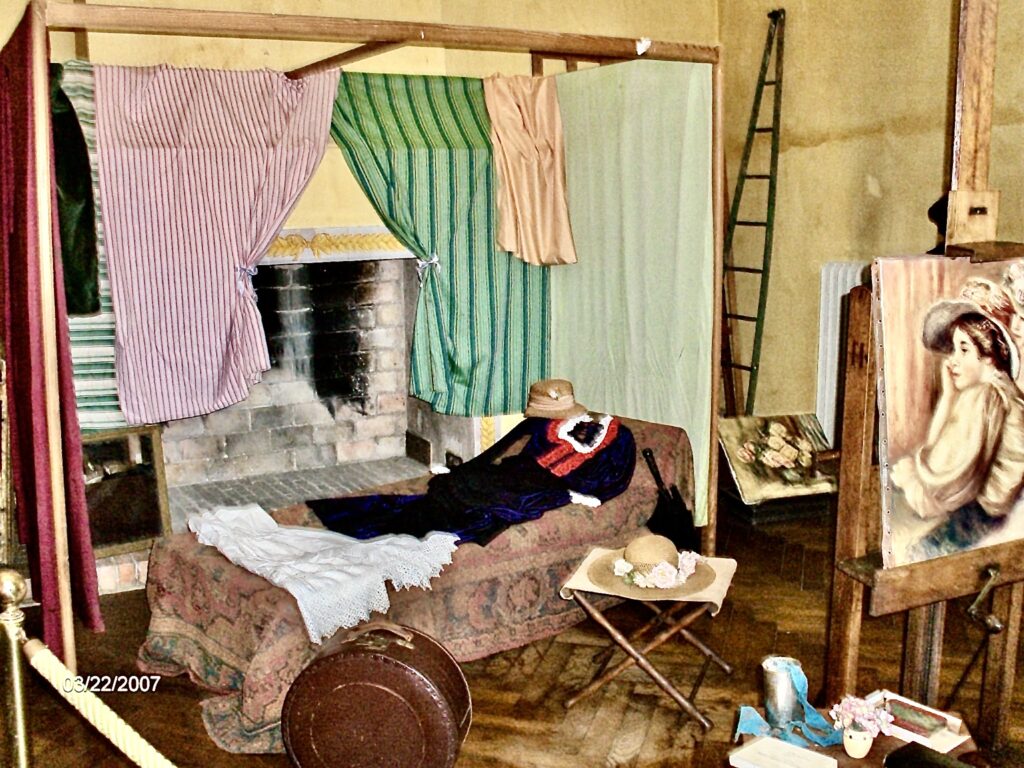 |
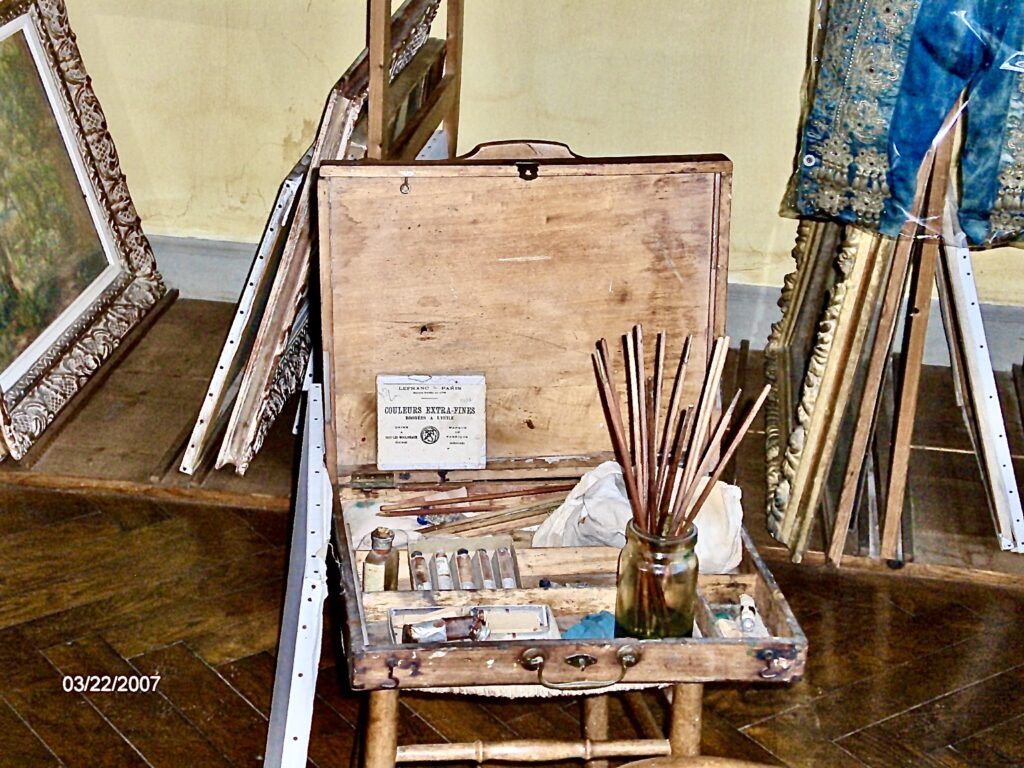
“Painting was intended, was it not, to decorate walls. Therefore it should be as rich as possible. For me a painting…should be something to cherish, joyous and pretty, yes, pretty!” —Renoir to Albert André 1919.
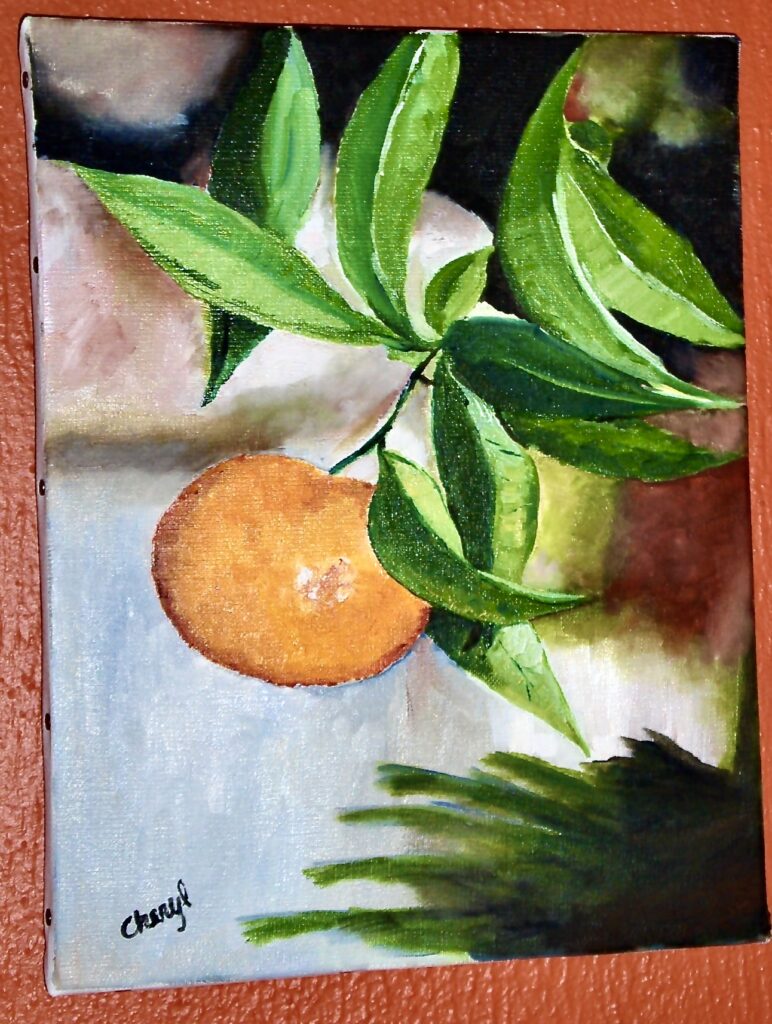
À bientôt







